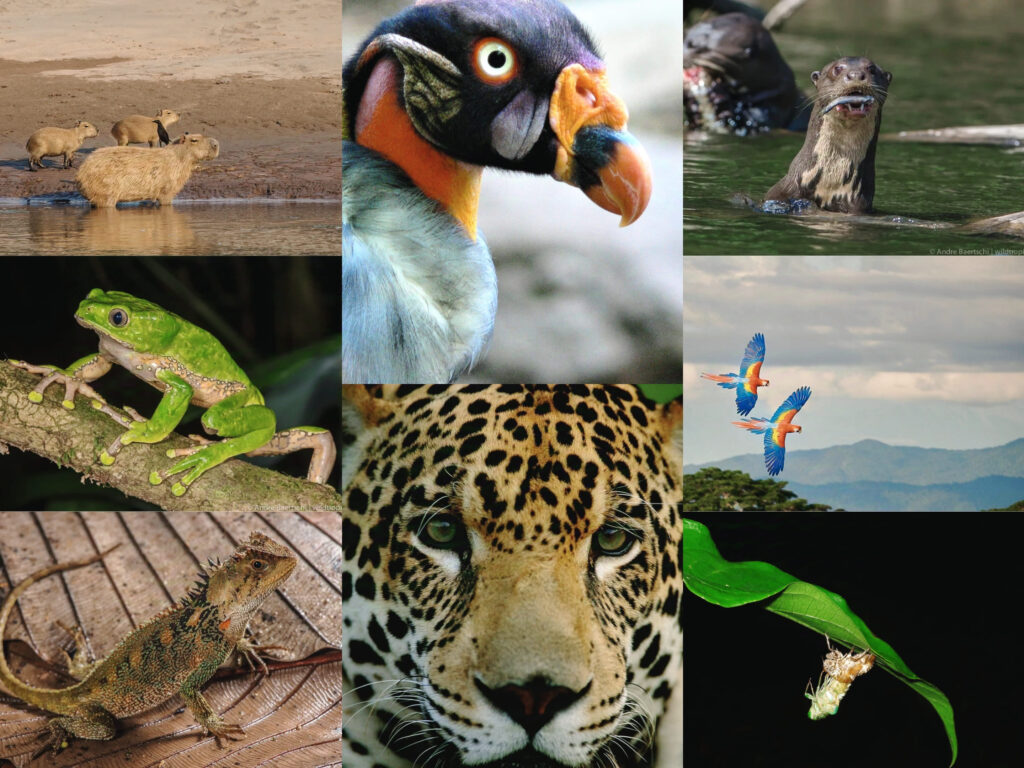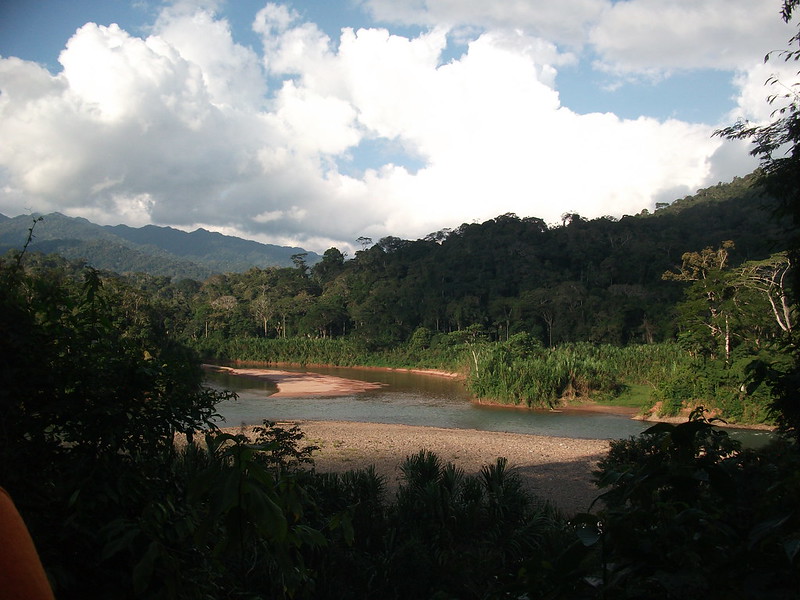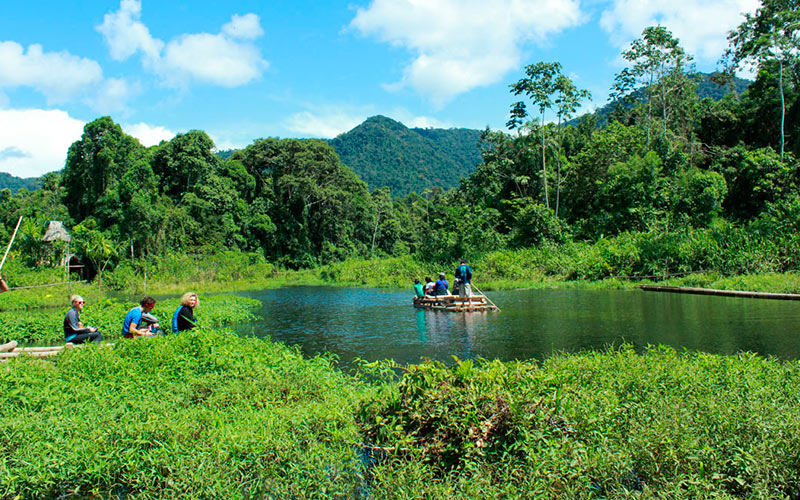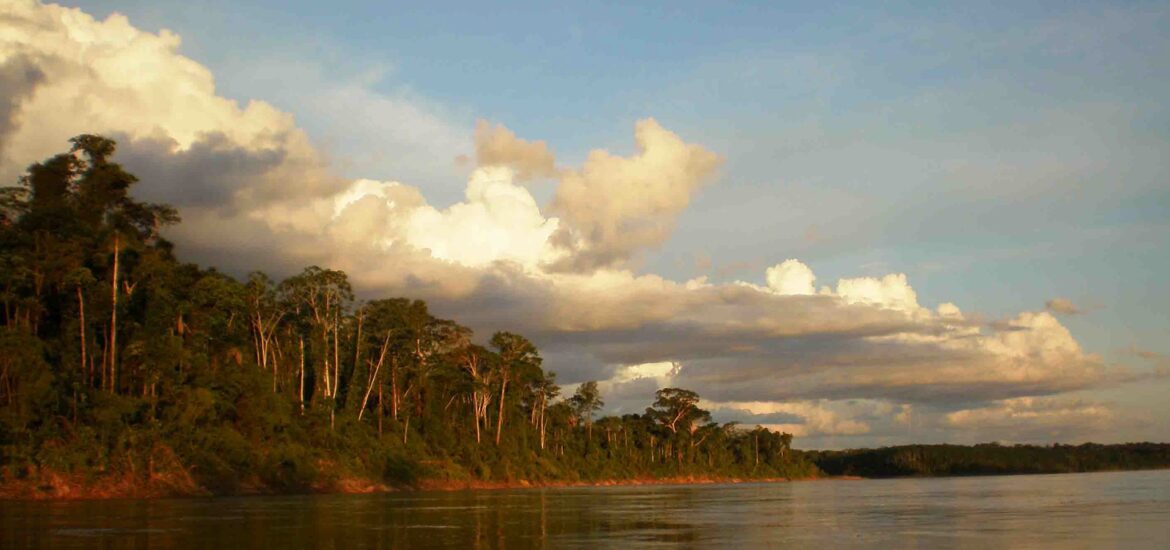Peru and the Amazon jungle never cease to amaze us. With its rich flora, fauna, and incredible biodiversity, this region attracts travelers from all over the world. You may have already heard of famous destinations like Manu National Park or the Tambopata Research Center, both well-known for their stunning beauty and amazing wildlife.
However, this time, we want to shine the spotlight on a lesser-known gem: Bahuaja Sonene National Park. While it may not be as famous as the other two, Bahuaja Sonene is equally breathtaking and full of natural wonders. So, let’s dive into this diverse and vast Peruvian national park and explore what makes it so special. Ready? Let’s go!
Location & Weather
The Bahuaja Sonene National Park is a remarkable biodiversity hotspot in Peru, home to a unique blend of habitats from both the southern and northern Amazon regions. It protects the only tropical wet savannah in Peru, known as the Heath Pampas, which is the habitat of rare species such as the marsh deer and the maned wolf.
You can find Bahuaja in between the Madre de Dios and Puno departments, to be precise in Sandia and Tambopata provinces. The park has a tropical humid and subtropical Amazonian environment, with 2,400 mm of annual rainfall on average and 8°C to 38°C temperature ranges. A cool wave of southern winds known as “friaje” can significantly lower local temperatures in June and July.
Flora and Fauna
The park is rich in diverse plants and animals. It hosts over 600 bird species, such as the harpy eagle and king vulture. Additionally, there are more than 180 mammal species, including the giant anteater, the jaguar, and the giant river otter. The park also has over 50 reptile and amphibian species, including the black alligator, anaconda, and taricaya.
You may also spot deer, and capybaras, and if you’re lucky, catch a glimpse of the elusive anaconda or the legendary yacumama, a giant mythical serpent! In addition, five frog species are exclusive to this location. The waters are rich in life, with 180 fish species and 1,200 butterfly species. Bahuaja Sonene is also significant for flora in Peruvian territory, as it protects the sole humid tropical savannah.

Beautiful palm trees, such as aguaje, form islands among a variety of grasses. These grasses shelter a diverse range of creatures. Rubber trees and screw trees enhance the rich nature of the Candamo River basin. As you go higher, you’ll come across tiny woods filled with bushes and little trees. The vast plant life contains economically important species such as chestnut, cedar, and mahogany.
You’ll see palm trees like mingucha, acai palm, and pona. Bahuaja Sonene National Park life diversity is astonishing and should be protected! It also protects the ancestral lands of the Ese’eja ethnic group, vital for their culture. Preserving the park safeguards ecosystems and supports indigenous traditions. Together, they form part of the Vilcabamba-Amboró Conservation Corridor.
Heath Pampas
The Heath Pampas are a stunning part of South America’s tropical rainforests, located in the southern region of Bahuaja Sonene. Covering over 5,000 hectares, these pampas are a unique treasure in our area. They gradually extend into Bolivia, where they are known as the Pampas of Mojos.
Picture a landscape that looks like a golden-orange sea, sprinkled with palm trees and small forest areas. The flat plains remind you of the vast savannas in Africa and are filled with tall grasses that can reach nearly two meters high. Visiting the Heath Pampas is an exciting adventure that offers a wonderful experience over several days.

As you travel, take a moment to soak in the stunning scenery. You might see colorful macaws flying across the bright blue sky. Keep your eyes peeled for turtles and caimans relaxing on sun-soaked logs. This journey promises to be a memorable experience in one of the most beautiful and untouched Amazon ecosystems. Enjoy every moment!
What to Do
Trekking: Get into the rainforest, breathing fresh air while you see creatures in their habitat. Bahuaja Sonene offers small routes for you. You can also go trekking with park rangers or with members of the Indigenous communities living nearby
Stay in Kotsimba Lodge: This lodge, located in the heart of the park, not only offers great accommodation services thanks to its cabin-like glamping, but also visits a hanging bridge, canopy, or rafting in the Malinowski River.

See the Waterfalls: Inside the park, you’ll find at least two waterfalls. Although you must walk a little, it’ll be worth it. You can also take a dip to have some rest in clear pure waters!
To get to Bahuaja Sonene, you will have to travel to Puerto Maldonado, the Madre de Dios region’s capital, to get there. There is a flight from Lima that goes there; the average cost of a ticket is around 120 dollars. If you’re in Cusco, you can take a bus, which is around 25 dollars.
Once you’re here, several travel businesses provide various tour packages, from half-day trips to longer journeys lasting three days or more. Because of this, Puerto Maldonado provides an easily accessible starting point for discovering the distinct beauty and biodiversity of the neighboring natural reserves, such as the Tambopata Research Center.
We hope you can learn more about our rainforest and see the importance of Bahuaja Sonene, which, just like all protected regions in Peru contributes to the habitat of flora and fauna species.
Don’t forget that Viagens Machu Picchu can help you with your tours to Peru’s different destinations. We’ll be more than glad to assist you in setting up your trip. Just contact us and we’ll give you proper assistance!
Viagens Machu Picchu, journeys that inspire, moments that last.

